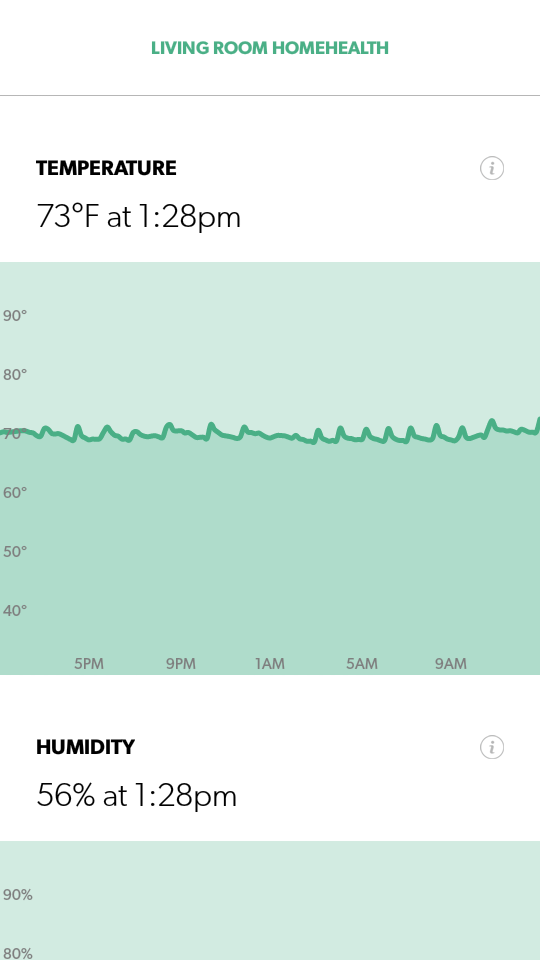Two of the biggest drawbacks to home security systems is that many of them are difficult to install and that people aren't very keen on sharing their homes with obvious cameras staring at them. New York-based startup Canary's eponymous security device is a plug-and-play system that's designed to blend into the decor. The recently-released upgraded version includes a new learning functionality, so we set one up to see how well it got on with the job of standing guard.
According to its creators, the Canary is designed mainly for renters and others who normally don't go in for security systems. It integrates with the Wink platform and is designed to not only record motion-capture video, but also to monitor the room environment and send alerts in the event of anything unusual.
Out of the box, the Canary system is deceptively simple. There's the Canary camera/monitor unit, a secure setup cable, AC power adapter, micro-USB cable, and a Quick Start guide. In operation, the camera is self contained aside from the USB mains power cable.

In appearance, the camera is very uncamera-like. To the uninitiated, it looks more like an electric air purifier and is basically a plastic cylinder 6 in (152 mm) high, 3 in (76 mm) in diameter, and weighing 0.87 lb (396 g). Aesthetically, it has the sort of muted "fits anywhere" design that will let it blend into most decors, so it can sit unnoticed on a shelf or side table where the wide-angle lens has a commanding view of the area.
The 1080p camera monitor is available in white, silver, or black, and is equipped with a 147-degree wide-angle lens, automatic night vision, a 3-axis accelerometer and motion detection capabilities. In addition, it can detect ambient light, capacitive touch, temperature, humidity, and air quality.
Other hardware in the camera unit includes a microphone, built-in speaker, and a 90+ dB siren. It connects to the Internet by means of a 2.4 GHz Wi-Fi or wired Ethernet and the company recommends a broadband connection with at least 1 Mbps upload speeds. Power comes via the USB cable, so proximity to an outlet is a consideration, however, the Canary comes with a very long cable.

Set up is surprisingly simple, though downloading the app is essential. This is one of those devices where not having the app leaves you with a paperweight with a built-in nightlight. That being said, the iOS and Android app is a neat hand-holder as it walks the user through each step from account creation to security set up. Some steps, such as software updates, take a bit of time, so the app fills this with slideshows of the Canary's features.
Canary places a heavy emphasis on "bank-level" security and says the unit has AES 256-bit encryption, TLS/SSL connections, secure cloud video storage, and firewalls. Even pairing the unit with a smartphone means physically connecting the two with the included cable to avoid any techno-eavesdropping.
The app acts as the basic control center for the Canary. The interface is very simple, though we found the navigation to be a bit confusing even after a week of steady use, with important settings hidden away in submenus. The main screen is dominated by the Watch Now button that opens a live video feed from the camera. Below this are the environmental readouts for temperature, humidity, and air quality based on airborne particulates. Touching any one of these brings up a set of graphs showing the readouts for the past 24 hours.

Below the main readouts are the mode settings, which arms the camera to record and send alerts if any activity is detected, disarms the system so it records activity but does not send an alert, or activates a privacy setting to switch off the camera completely. The videos can be accessed through the app's timeline, which also includes a record of when the user leaves home and returns, as well as any alerts. One refreshing thing we found about the app was that videos did not rely on a Wi-Fi connection, but could be played using a mobile data feed.
The app not only acts as a control unit, but also uses the mobile device's geolocation function to turn it into a geofencing device. Walking out the door with a smartphone with the app installed automatically arms the Canary without any action on the part of the user.
The company says that one new feature of the Canary is that is now incorporates a learning algorithm that allows it to adapt to the user's patterns. Also, the sensitivity of the motion detector can be manually adjusted via the app, so it doesn't send needless alerts.

In practice, we found that the algorithm didn't produce major changes to how the Canary works, but after a week, we did notice that it could tell pretty consistently when we left home rather than just went to fetch something from the car. In addition, it stopped responding to morning sunlight on clear days, the dogs going for a drink of water, or someone crossing their legs in a quiet room.
The company says that the algorithm is designed to learn not only normal movement patterns, but also the environmental norms, so the Canary can send an alert if the temperature or air quality suddenly shift. In addition, its accelerometer can detect earthquakes or if the monitor is violently handled.
Overall, we found the Canary to be among the more practical home security devices we've tested so far. The basic design is unobtrusive with a styling that blends in without screaming "security camera." The setup and installation were quick and easy, and despite its less that perfect interface, the app puts its main features front and center. The camera also provides clear high definition video that lends itself to enlargement for studying details, and the wide-angle lens can easily cover most of an open plan flat or small house. In addition, the night vision was very good, though it did tend to switch on in normal evening lighting conditions.
The Canary is available for US$199, though between December 13 and December 26 in the US and Canada there's special price of US$179. In addition, there are a choice of subscription plans. The basic free plan allows for playback of videos recorded for the past 12 hours and five saved videos, the two-day plan costs US$49 annually, a week's worth of video is US$99 annually, and a month's is US$299 per year.
The video below introduces the Canary.
Product page: Canary
Buy it now: Amazon






















